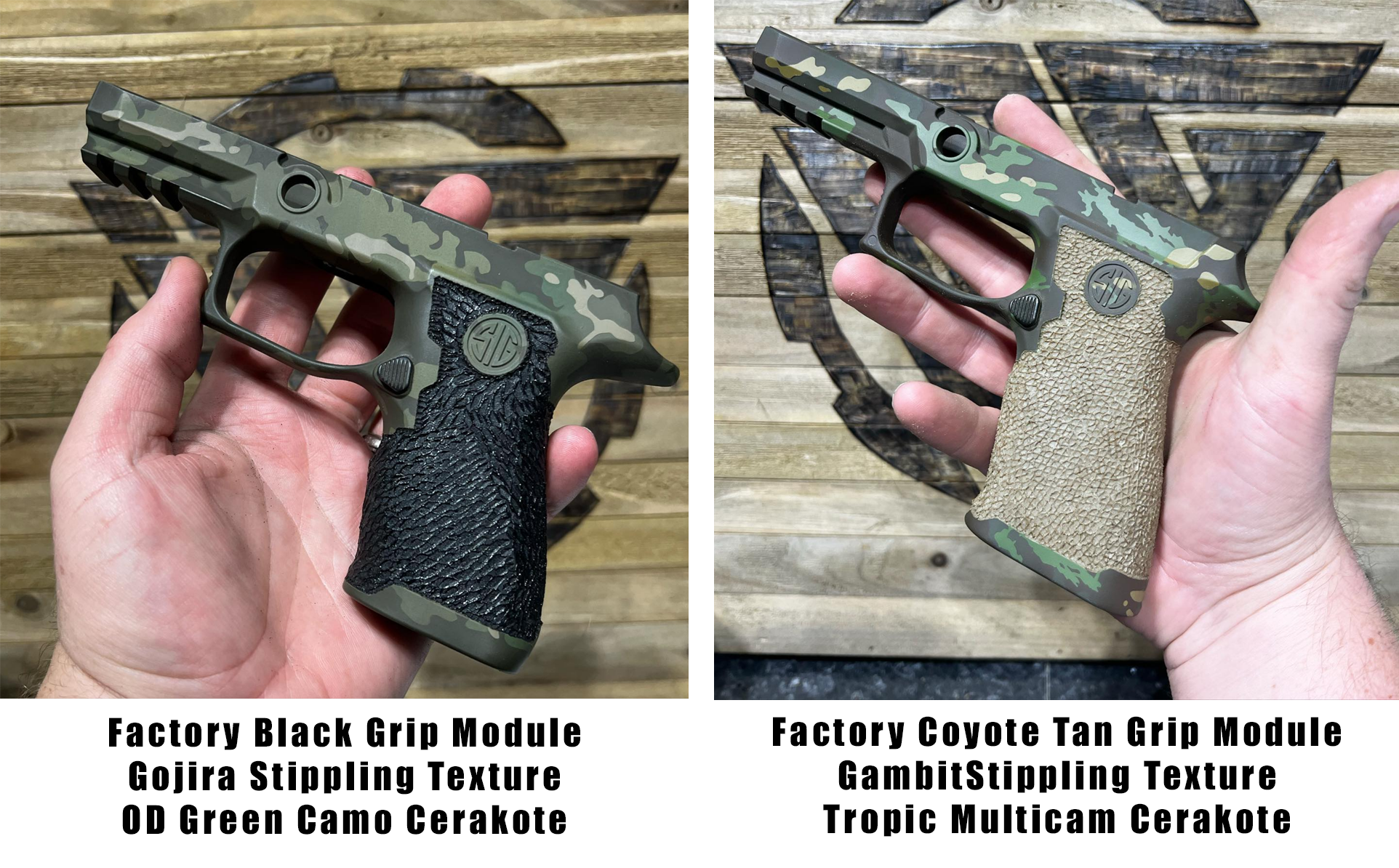STIPPLING GRIP TEXTURES
Stippling provides the user with a more positive grip on their firearm and also helps wick moisture from the hands. IDG offers a handful of grip textures; each of which have a different purpose and aesthetic. Their aggressiveness is defined below from least to most aggressive:
- Havok (least aggressive - Concealed Carry IWB)
- Gambit (Good for OWB / Duty Carry)
- Gojira (Reptile like scale pattern)
- Xavier (most aggressive - Duty and Competition)
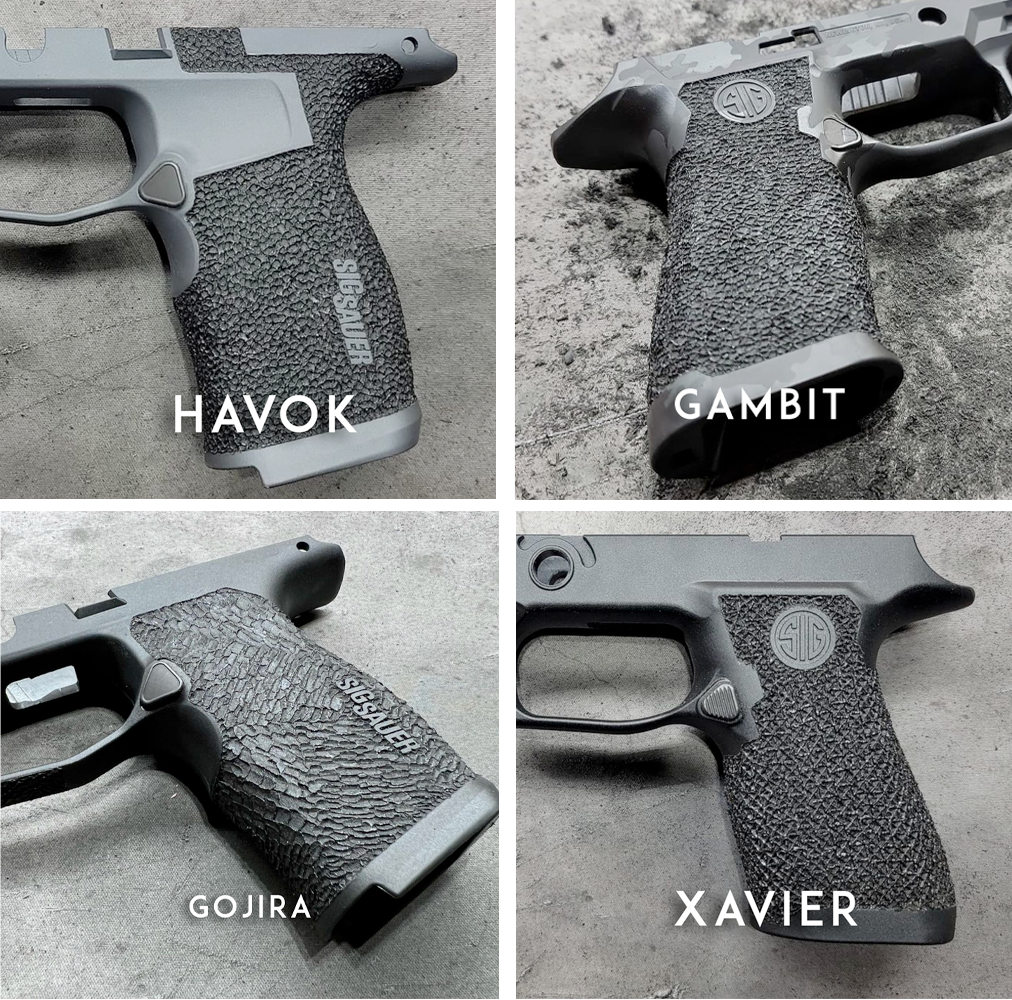
* Please note that different each manufacturer has slightly different polymer properties from one another. For example, Xavier burns more aggressively on a Sig Tungsten TXG Grip module than it does on a Glock. Xavier and Gambit is what I have on almost all my personal Glocks. You can read more about these textures on our Sig P320 / Sig P365 (& XL) / Glock and Polymer Frame product pages.
CONCEALED CARRY PACKAGES:
We receive a ton of emails with questions regarding the aggressiveness of our stippling textures. As one can imagine, it is very difficult to convey over the phone unless you physically handle it. In addition, everyone has a different view concerning what is aggressive to them. Some people have mentioned that their factory stippling is too aggressive to conceal carry while others are looking for a grip texture that will stick to them like velcro for concealed carry or competition shooting sports.
Therefore, we have a new product offering in our "Concealed Carry Packages" which allows the customer to purchase a Sig P320 or P365 / P365 XL with one texture on the side panels, and another texture on the front and back-strap. This allows them to choose a milder stippling pattern (like Spawn or Havok) where the grip is up against their body. The front and back-strap are only able to be felt when drawing their firearm and shooting so these can be a more aggressive texture. The end result is the best of both worlds that allows the user to stay comfortable when carrying concealed and have the extra grip where they need it, when they need it.
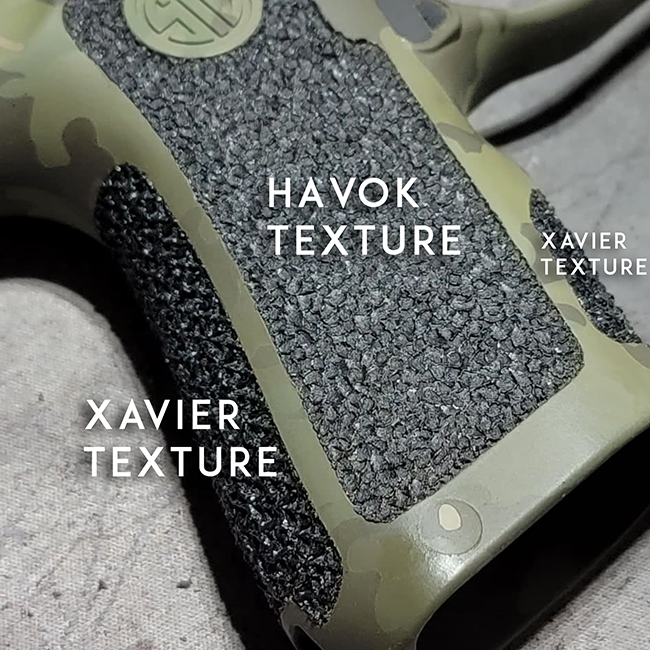
TRIGGER GUARD STIPPLING AND INDEX FINGER STIPPLING (FOR SIG P320 and P365):
Trigger guard stippling gives your support hand a reference point along with some extra grip when shooting with both hands.
Index Finger stippling is done to both sides of the grip module on Sig P320 / P365 models and gives your finger a reference point when following the firearm safely rules. It also gives your support hand thumb some grip to apply downward pressure to mitigate recoil. This is when you use a high tang grip with thumbs forward like many firearms instructors teach.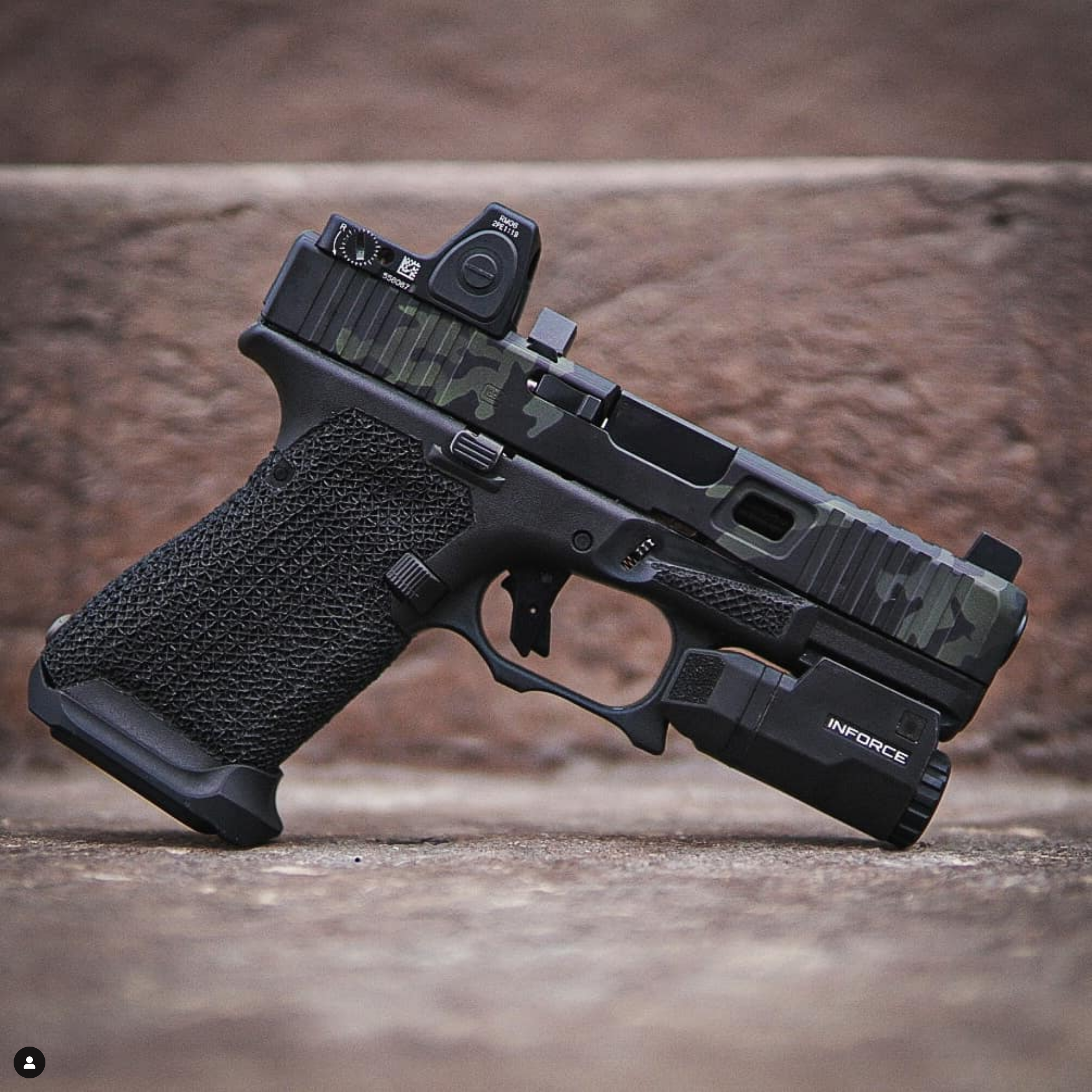
GLOCK STABILIZER CUTS:
Stabilizer cuts (also known as a 'gas pedal' or 'shelves' or 'accelerator cuts') are done to both sides of the Glock frame near the takedown lever / slide lock. It allows your support thumb to rest on the stabilizer cut and provide downward pressure to help mitigate recoil better for faster followup shots on target. It is also stippled and provides you with a tactile reference point when following the firearm safety rules.
GLOCK UNDERCUTS (SINGLE AND DOUBLE):
A Single Undercut allows the shooter to have a higher grip on their firearm. As you may know, the higher up you can get on a firearm, the better you will be able to control the recoil. This also helps to fix "Glock knuckle" that a lot of Glock shooters tend to experience after shooting with them for long periods of time.
A Double Undercut has an additional undercut for the support hand to both serve as a reference point and to allow the support hand to rest higher up as well.
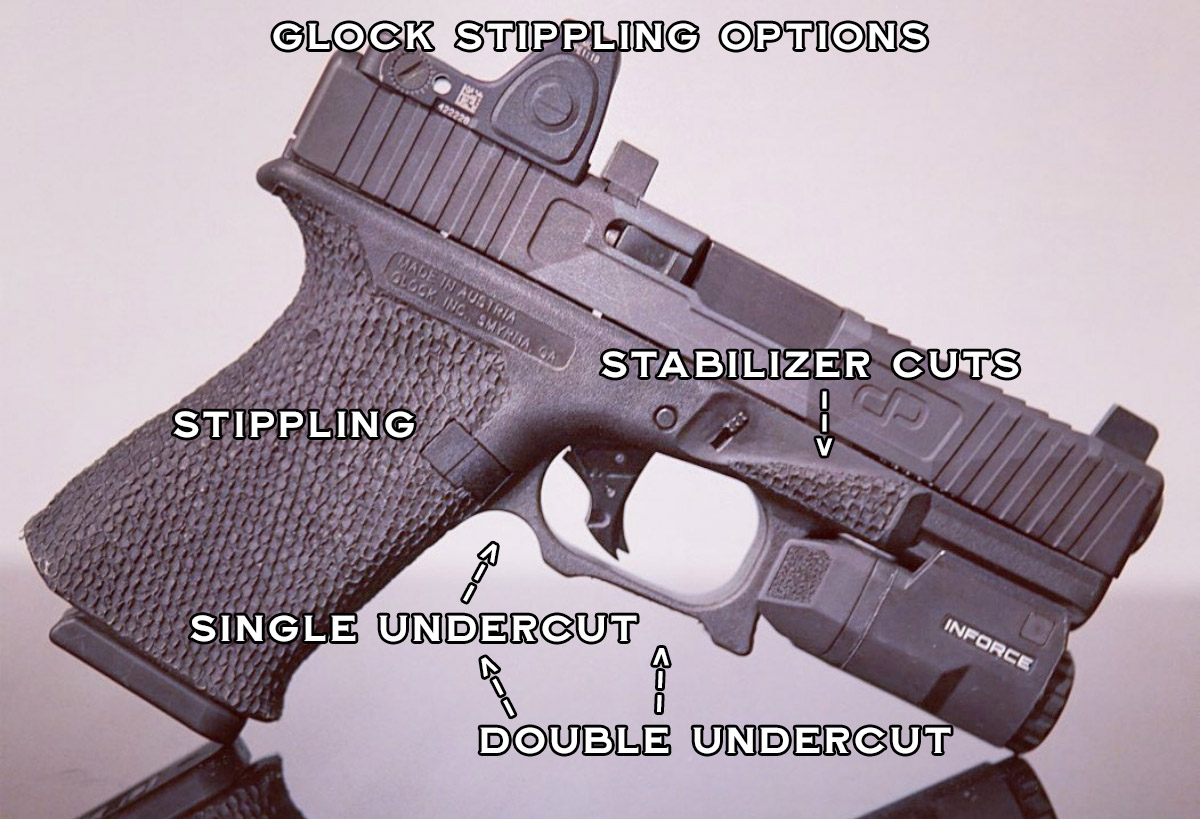
CERAKOTE:
IDG Stippling outsources their cerakote work to Joey Cerakote. We chose them due to their amazing quality and customer service.
Cerakote is a ceramic based finish that can be applied to metals, plastics, polymers and wood. The unique formulation used for Cerakote ceramic coating enhances a number of physical performance properties including abrasion/wear resistance, corrosion resistance, chemical resistance, impact strength, and hardness.
Cerakote is NOT required on our polymer frame stippling but it is a great way to further customize your build. It'll definitely give you a truly unique look and feel to your firearm. We do highly recommend that you add Cerakote to your optic cuts and slide milling services to prevent rust and corrosion. Otherwise, the metal is exposed to the elements and is also quite unsightly.
Cerakote is VERY durable but it can show some signs of wear over time. This is typically found where kydex holsters interface with the firearm or when a light or laser is frequently taken on and off an accessory rail.
We do not recommend having your grip Cerakoted AFTER stippling, the Cerakote fills in some of the stippling grooves and reduces the effectivness of the stippling texture. Therefore, the whole grip is Cerakoted and then we sand off the stippling area to expose the factory polymer and then stipple that.
You have probably seen that any images showcasing our work with Cerakote show a two-tone look where the frame is Cerakoted but the stippling area is black. That is because we have the whole frame / grip module cerakoted first. Once it is returned, IDG Stippling lays out the border design and then sands away the area to be stippled, thus exposing the factory polymer color. If it was a black frame, then the factory black will be exposed. If FDE, then FDE will be exposed again. Our stippling process burns a pattern onto this polymer but that is what gives our work a two-tone appearance. 